
Apamea crenata, known as the clouded-bordered brindle, is a moth in the family Noctuidae. It is distributed throughout the Palearctic realm. In the North it crosses the Arctic Circle, in the Mediterranean it is found only in cool locations and mountains avoiding very hot areas. In the Alps, it rises to an altitude of about 2000 metres.

Thera variata, the spruce carpet, is a moth of the family Geometridae. It is found throughout Europe, North Asia and Japan. The common name spruce carpet is also used when referring to Thera britannica.

Dichrorampha acuminatana is a moth of the family Tortricidae. It is found in Europe and the Near East.
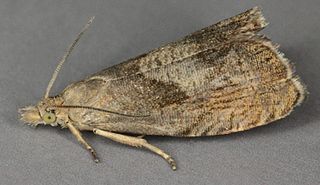
Dichrorampha simpliciana is a moth of the family Tortricidae. It is found in Europe and the Near East.

Agriphila selasella is a species of moth of the family Crambidae. It was described by Jacob Hübner in 1813 and is found in Europe and east across the Palearctic.

Evergestis extimalis is a species of moth of the family Crambidae. It is found in the Palearctic.
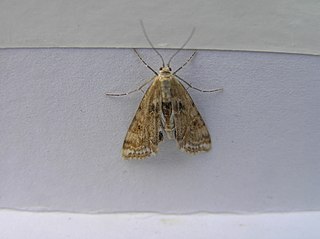
Cataclysta lemnata, the small china-mark, is a moth species of the family Crambidae. It is found in Europe, Morocco and Iran.

Chilo phragmitella is a species of moth of the family Crambidae. It is found in Europe.

Parapoynx stratiotata, the ringed china-mark, is a moth of the family Crambidae. The species was first described by Carl Linnaeus in his 1758 10th edition of Systema Naturae. It is found in Europe.

Anania coronata, the elderberry pearl, elder pearl or crowned phlyctaenia, is a species of moth of the family Crambidae. It was described by Johann Siegfried Hufnagel in 1767 and is found in the northern parts of the Palearctic realm. It was previously also listed for the Nearctic realm. The species closely resembles Anania stachydalis.
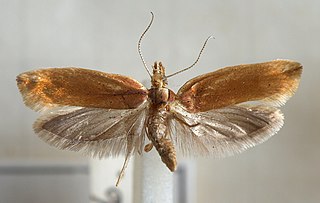
Ypsolopha ustella, the variable ypsolopha moth, is a moth of the family Ypsolophidae. It is found in most of Europe and is also present in North America.

Agonopterix ocellana is a species of moth of the family Depressariidae. It is found in Europe and was first described by Johan Christian Fabricius in 1775
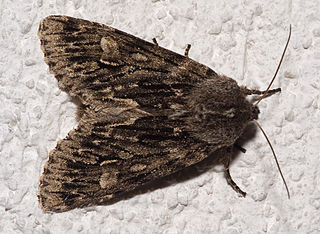
Brachionycha is a genus of moths of the family Noctuidae. The genus was erected by Jacob Hübner in 1819.
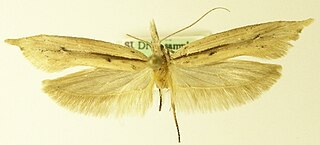
Ypsolopha mucronella is a moth of the family Ypsolophidae. It is found from Europe, through Siberia to Japan and in Asia Minor.
Platyptilia isodactylus is a moth of the family Pterophoridae found in China, Europe and was introduced to Australia for biological control. It was first described by the German entomologists, Philipp Christoph Zeller in 1852.

Aleucis distinctata, the sloe carpet or Kent mocha, is a moth of the family Geometridae. The species was first described by Gottlieb August Wilhelm Herrich-Schäffer in 1839. It is found from Europe to Turkey, Azerbaijan and Turkmenistan.
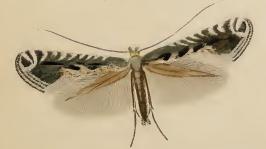
Parornix torquillella is a moth of the family Gracillariidae. It is known from all of Europe, except Spain and parts of the Balkan Peninsula.

Agonopterix yeatiana is a moth of the family Depressariidae. It is found in most of Europe.

Dichrorampha alpinana, the broad-blotch drill, is a species of moth of the family Tortricidae. It is found in almost all of Europe.
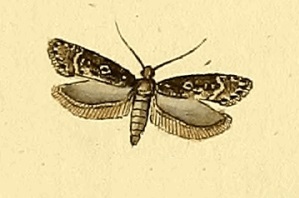
Gelechia sororculella, the dark-striped groundling, is a moth of the family Gelechiidae. It is widely distributed from Europe, throughout Siberia to the Russian Far East.




















